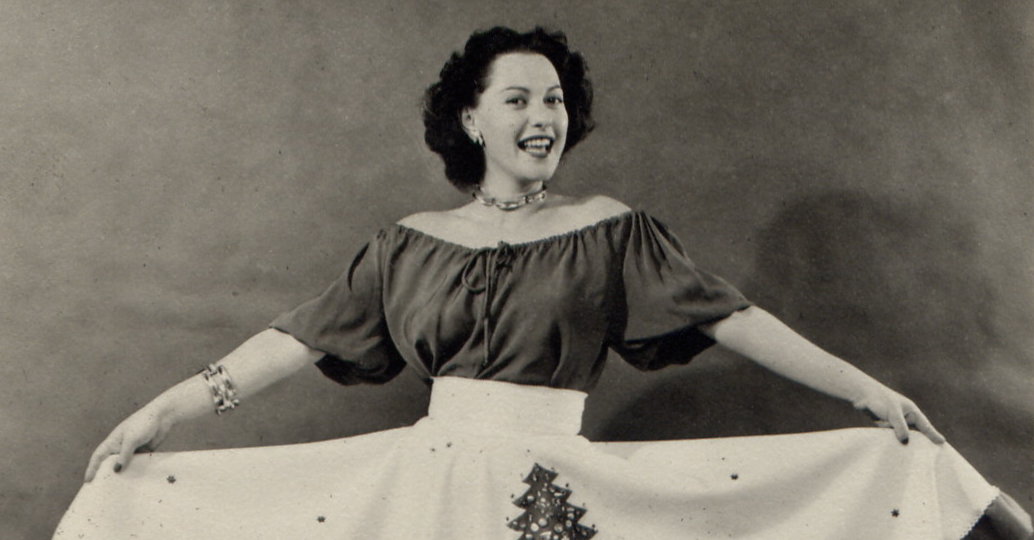
What’s a nice Jewish viscountess to do when she has a title but no money, a party invitation but no clothes and a pair of scissors but no sewing skills?
Invent the poodle skirt, of course.
That, quite by accident, is what Juli Lynne Charlot did in late 1947, in the process creating a totem of midcentury material culture as evocative as the saddle shoe, the Hula-Hoop and the pink plastic lawn flamingo.
Ms. Charlot, a New York native who died at her home in Tepoztlán, Mexico, on Sunday at 101, had been a Hollywood singer before her marriage in the mid-1940s to a viscount, or British nobleman. Fashion conscious but hopeless with a needle, she stumbled by necessity onto a pattern for a striking skirt that involved no sewing: Take a large swath of solid-colored felt, cut it into an expansive circle, adorn it with jaunty appliquéd figures in contrasting colors, snip a hole in the center and pop yourself in.
The result, the embellished circle skirt, was ubiquitous throughout the 1950s, bought in droves by women and, in particular, adolescent girls. With its voluminous fabric that flared prettily when the wearer twirled, it was just the thing for a sock hop.
Over the years, circle skirts by Ms. Charlot and her many imitators came adorned with a range of figurative appliqués, often comprising small visual narratives. But because the garment’s most popular incarnation sported images of poodles, all such skirts came generically to be known as poodle skirts.
“When I was a teenager, every girl in the entire Western world wore a poodle skirt,” the humorist Erma Bombeck wrote in a 1984 column. She went on to define it as “a skirt with enough cloth to slipcover New Jersey with a big poodle appliquéd on it.”






